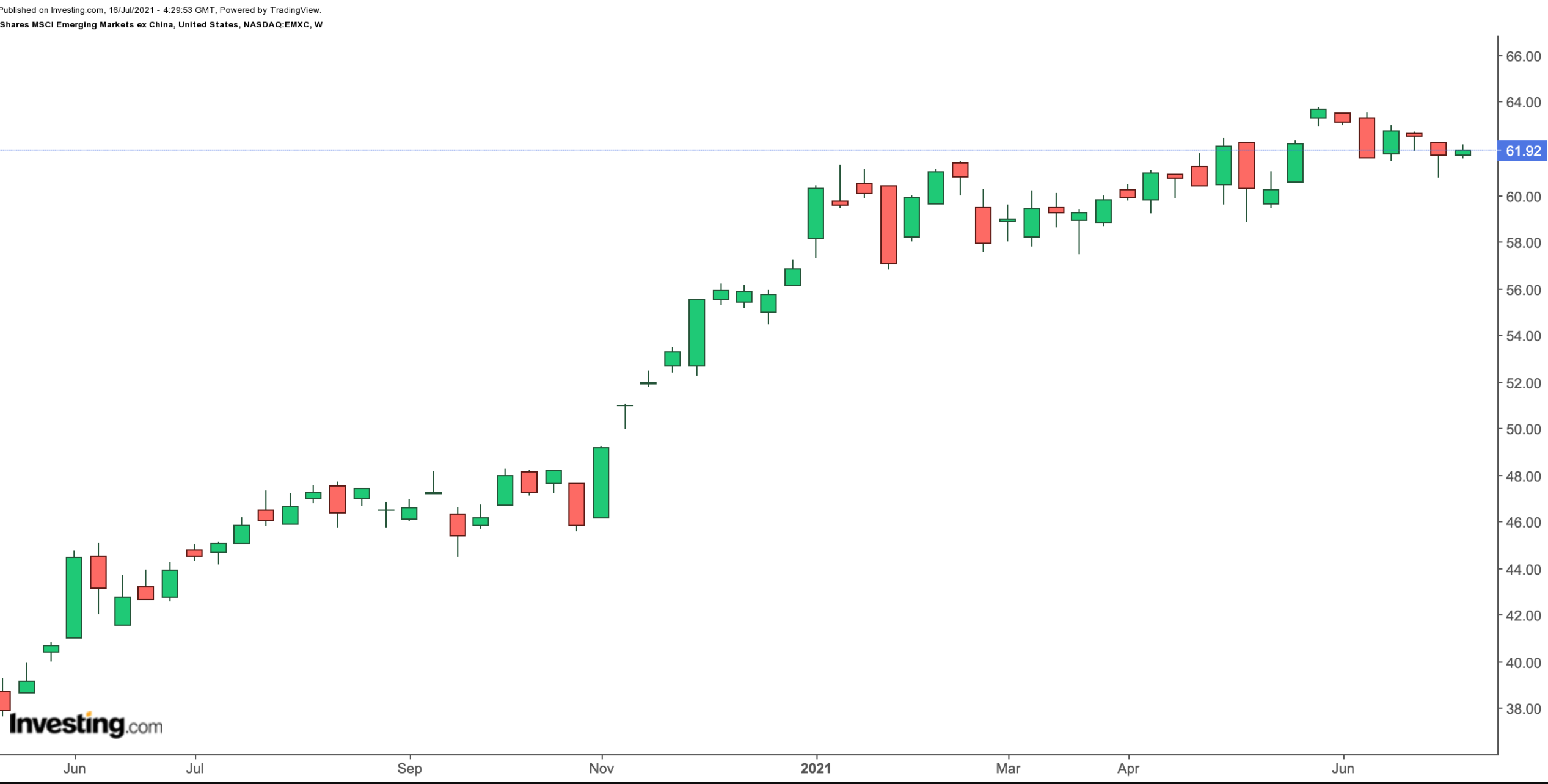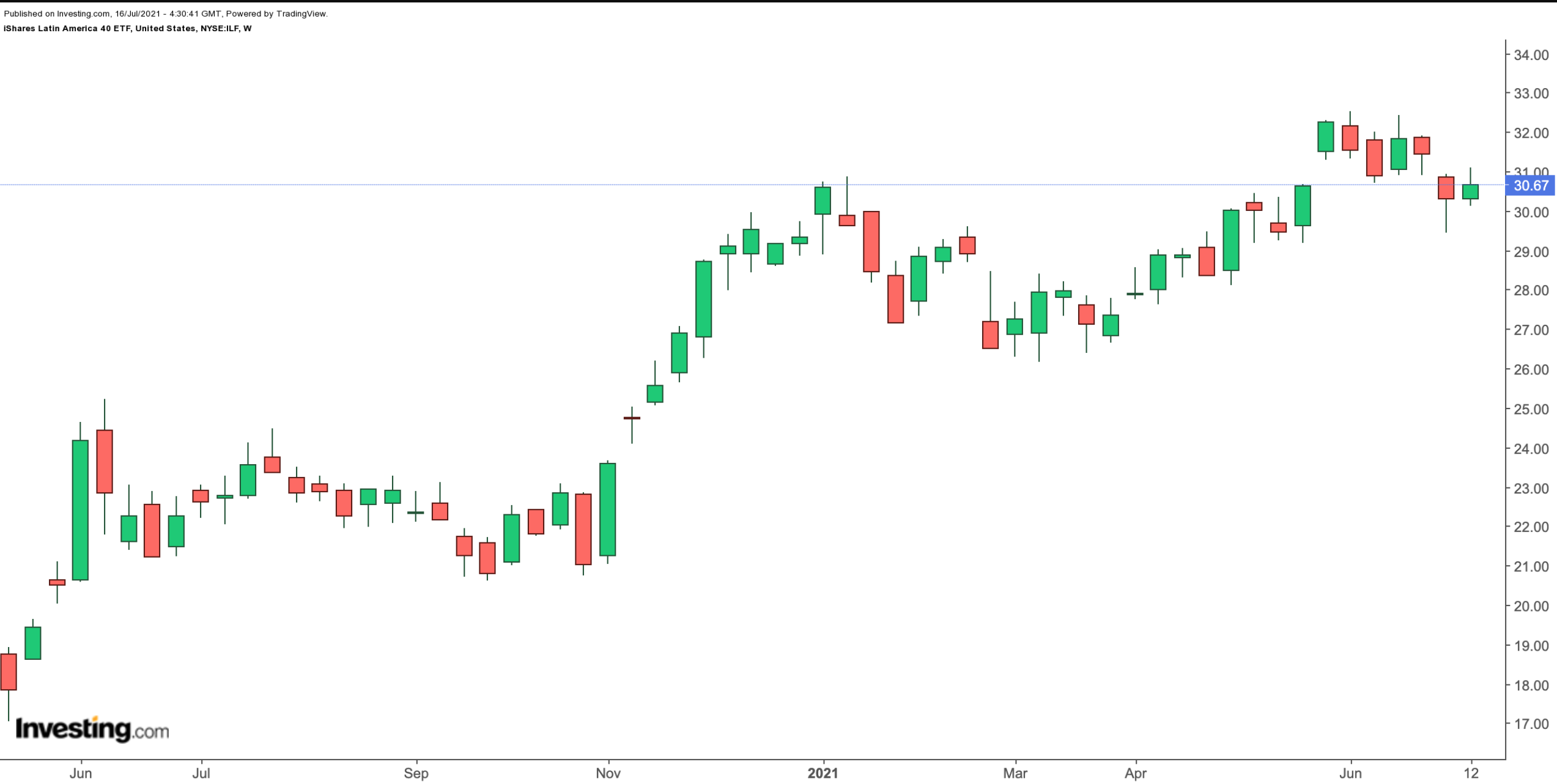While broader U.S. markets make new highs, many investors are also looking to other countries to mitigate the effects of a potential decline in U.S. equities in the second half of the year.
Therefore, today we introduces two exchange-traded funds (ETFs) that focus on emerging markets. They could appeal to a range of readers who want to ensure their portfolios are well diversified with exposure to other economies.
Most analysts regard emerging markets as crucial growth engines of the global economy in this decade. Understandably, the pandemic has had a negative impact on most of these countries. In many emerging markets, currencies have also come under pressure. However, in the long-run, these nations are likely to see the pace of economic growth pick up significantly.
1. iShares MSCI Emerging Markets ex China ETF
Current Price: $61.92
52-Week Range: $44.50-$63.74
Dividend Yield: 1.35%
Expense Ratio: 0.25% per year
iShares MSCI Emerging Markets ex China (NASDAQ:EMXC) provides exposure to large- and mid-capitalization emerging market companies, excluding China-based businesses.

EMXC, which tracks the MSCI Emerging Markets ex China Index, has 601 holdings. The fund started trading in July 2017.
In terms of countries represented, Taiwan heads the roster, with 22.62%. Next in line are South Korea (20.99%), India (16.13%), Brazil (8.20%), South Africa (5.55%), the Russian Federation (5.16%), Saudi Arabia (4.63%), Mexico (2.72%), Thailand (2.69%) and others. The top 10 names make up about 30% of net assets of $853 million.
Among the leading names in the fund are Taiwan Semiconductor Manufacturing (NYSE:TSM), South Korean chip groups Samsung Electronics (OTC:SSNLF) and SK Hynix (KS:000660), Brazilian miner Vale (NYSE:VALE) and South African internet and technology business Naspers (OTC:NPSNY).
Over the past 52 weeks, EMXC has returned close to 38%, and is also up 7.2% so far this year. The fund hit a record high in early June. Trailing P/E and P/B ratios are 21.30 and 2.06, respectively. Potential investors could regard a drop toward $60 as a better entry point into EMXC.
2. iShares Latin America 40 ETF
Current Price: $30.67
52-Week Range: $20.62 - $32.52
Dividend Yield: 2.13%
Expense Ratio: 0.48% per year
The iShares Latin America 40 ETF (NYSE:ILF) invests in 40 large and established Latin American businesses. The fund was first listed in October 2001. Its assets under management stand at $1.76 billion.

ILF tracks the S&P Latin America 40 Index. In terms of sectors, materials have the highest weighting (26.92%), followed by financials (26.37%), consumer staples (13.31%), energy (12.49%), information technology (5.61%), communication (5.28%) and others.
Around 55% of the funds are in the top 10 stocks. Close to 62% of the businesses are Brazil-based, followed by Mexico (21.91%), Chile (6.16%) and others.
Brazilian miner Vale, financial services groups Itau Unibanco (NYSE:ITUB) and Banco Bradesco (NYSE:BBD), energy group Petroleo Brasileiro (NYSE:PBR) and regional stock exchange Brasil Bolsa Balcao (SA:B3SA3) comprise the top names in the roster.
Over the past year, ILF is up 34%, and so far this year the fund returned 5.1%. It hit a 52-week high in June. However, it still remains below the multi-year high of about $37.5 seen in 2018. Trailing P/E and P/B ratios are 22.77 and 2.19, respectively.
The boom we’ve seen in commodity prices has provided tailwinds for many of the names in the fund. Those investors who are looking for commodity exposure, especially via Brazilian companies, should keep the fund on their radar.
Keep in mind, however, that ILF’s performance, in part, depends on currency fluctuations vis-à-vis the U.S. dollar. If the greenback were to depreciate over the rest of the year, emerging market funds could potentially benefit.
